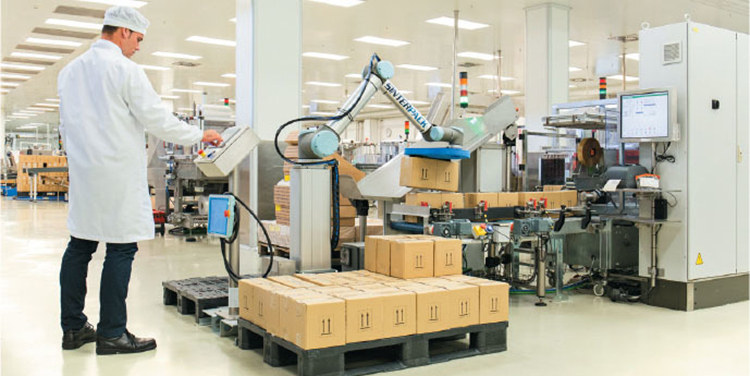
Historically, industrial robotic automation used in manufacturing and distribution applications required perimeter guarding and other safety mechanisms to prevent contact between personnel and the robot. Not anymore, however. With advances in sensor technologies and programming interfaces that make it much simpler to direct a robot’s action — not to mention smaller form factors and limits on power and force — today’s collaborative robots (cobots) and autonomous mobile robots (AMRs) can safely work alongside humans, no perimeter guarding required. That means robots can be deployed in small spaces and handle repetitive processes involving lighter, smaller items. Meanwhile, their human counterparts can be reassigned to more value-added tasks.
Although today’s robotic solutions are much safer than their predecessors, personnel still may have concerns about working around them. A new MHI Solutions article produced by The Robotics Group, “Fostering Human/Robot Interaction,” offers three recommendations to ensure that humans and robots safely function both together and in the same areas. These include:
- Audit the Application. Cobots are ideal for material handling tasks that don’t require significant speeds or 100% accuracy. Optimal tasks include moving material or parts into and out of machines, loading products into totes or onto trays for movement from production to packaging, pick-and-place processes, order fulfillment, bin picking, or palletizing finished goods. Before investing in a robotic system, it’s important to work with a vendor who will audit the proposed application to determine if a cobot is indeed the ideal solution. If it is, the end user should conduct an internal risk assessment of each proposed application to verify that the robot complies with internal safety standards.
- Refer to the Standards. For guidance on the safe deployment of industrial robots and cobots, there are two key documents in the U.S. that should be referenced: ANSI/RIA R15.06-2012 and RIA TR 15.606. Both require the robotic system integrator to perform a risk assessment to define the area in which the cobots will interact with humans, then apply risk reduction measures in the cobot’s design to minimize the chance of an accident. Hazards assessed include the robotic end effector, workpiece, supporting fixtures or equipment, the tasks performed by a human on the robotic system or in the surrounding area. Also based on the integrator’s assessment, the end user may need to implement safety measures (such as eye or foot protection in a specific space, signage or markers indicating the robotic work area, or interlocked safety guarding) to mitigate identified risks prior to the installation.
- Implement Training. Based on the safety and risk assessments, training should be developed and implemented for employees who will be directly interfacing with the robotic system. Additionally, users should be fully cognizant of the cobot manufacturer’s recommendations for safe system operation and maintenance, as well as advised to not change the robot’s function beyond the original intent without performing another risk assessment.
Want to learn more about implementing robots in your facility? Read the full article, here.



